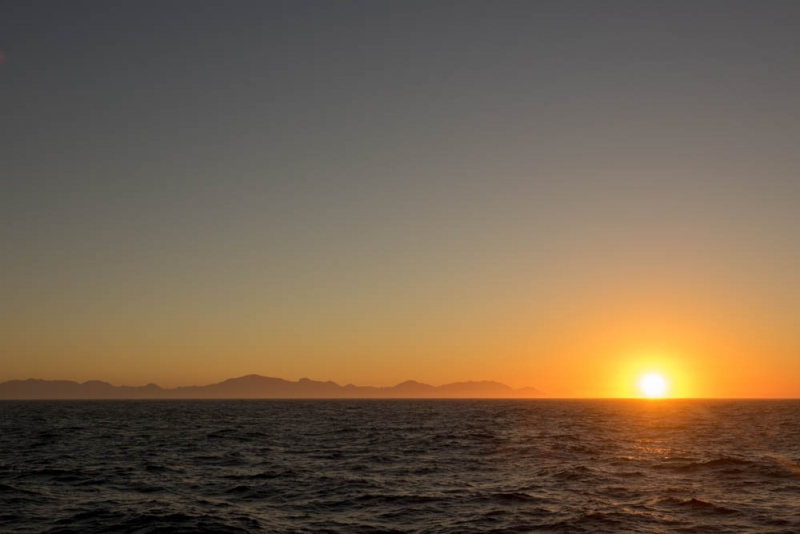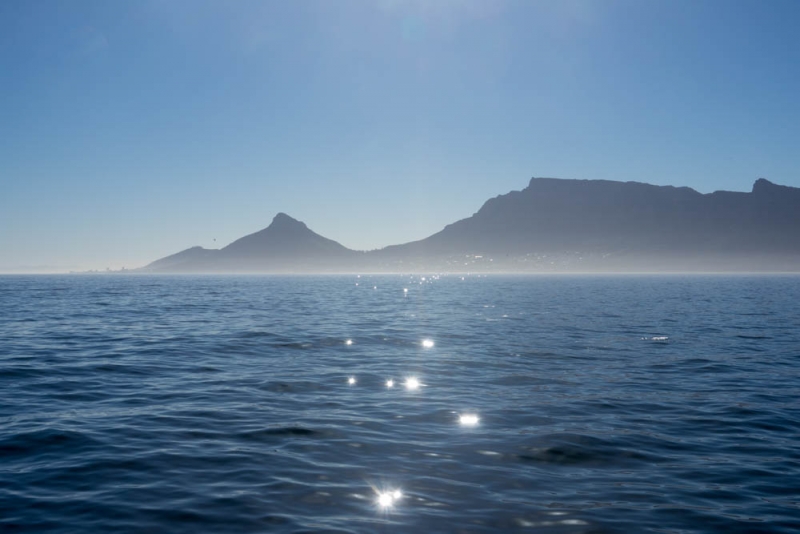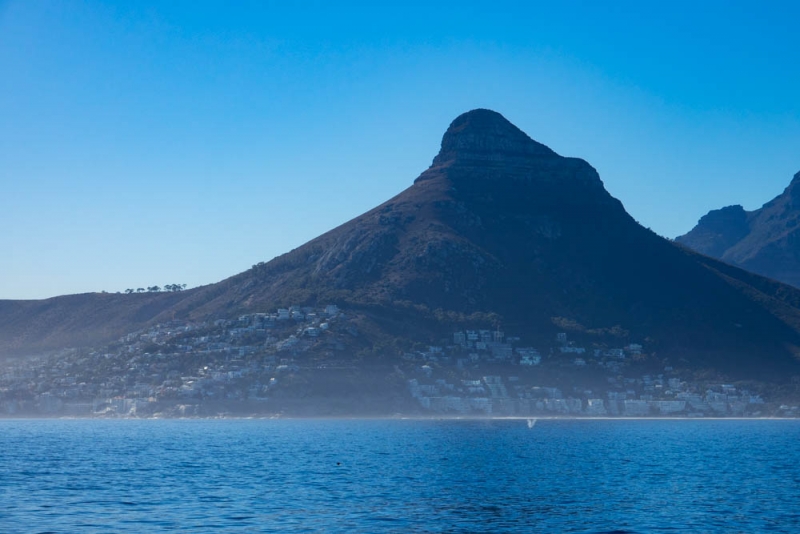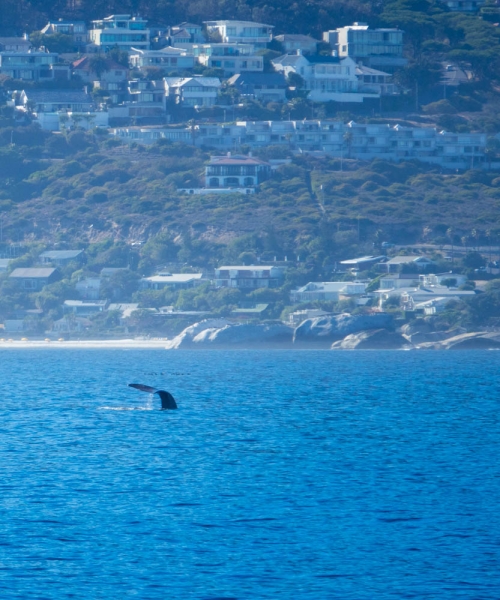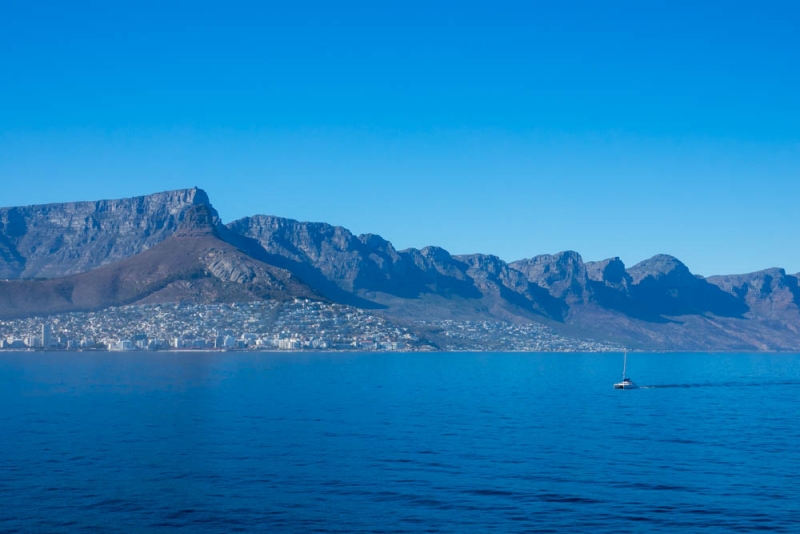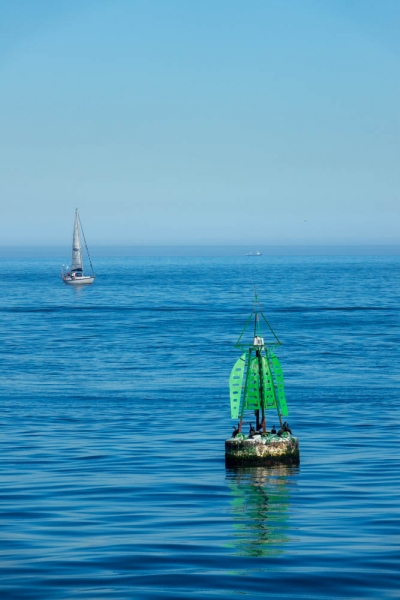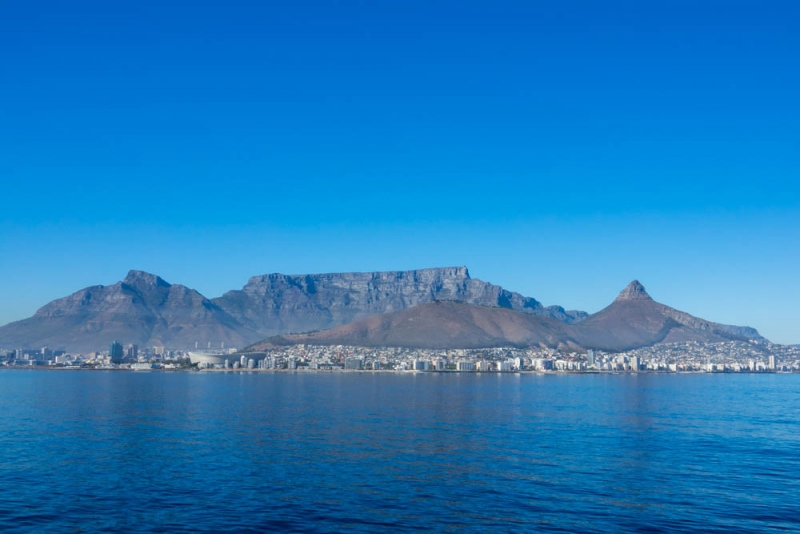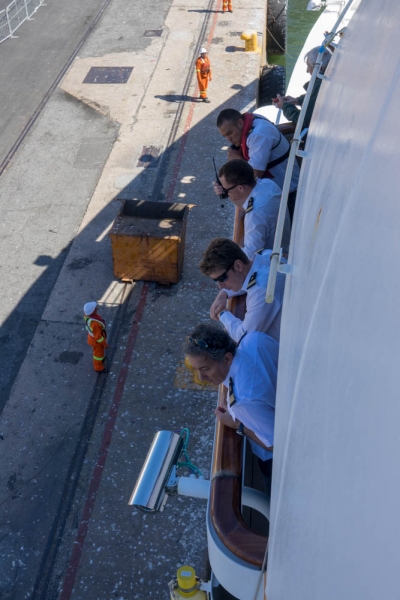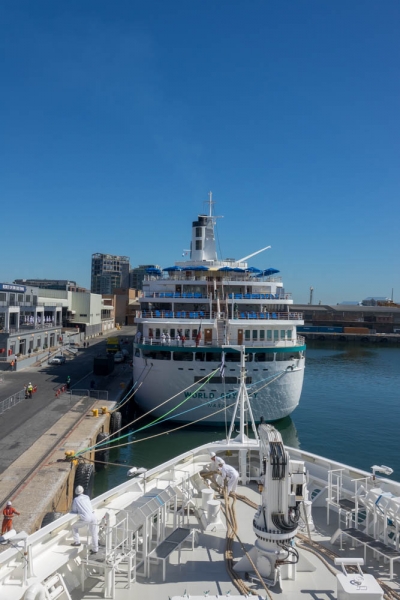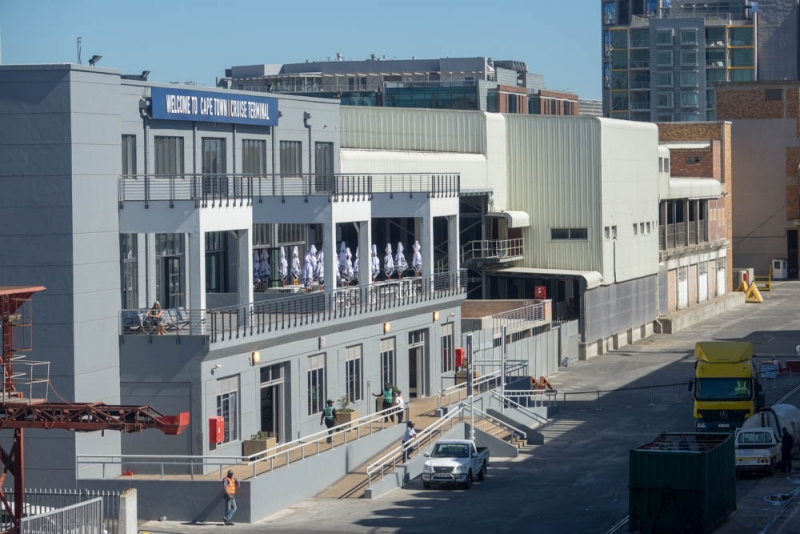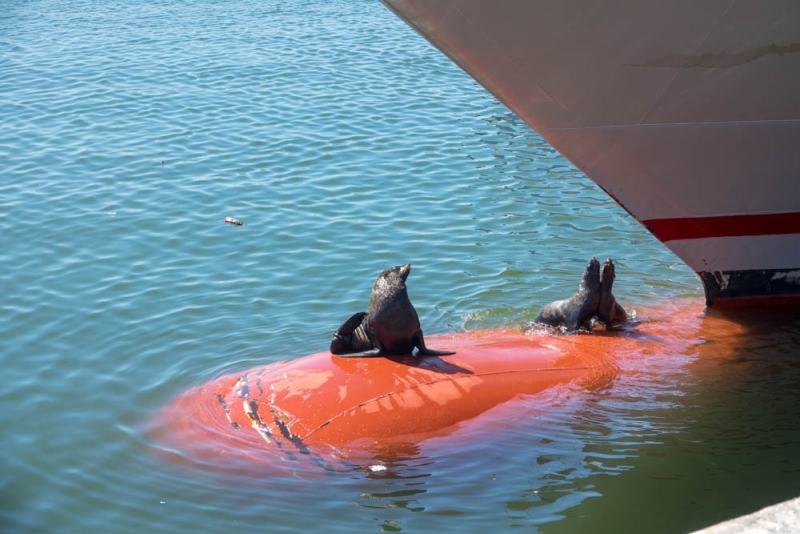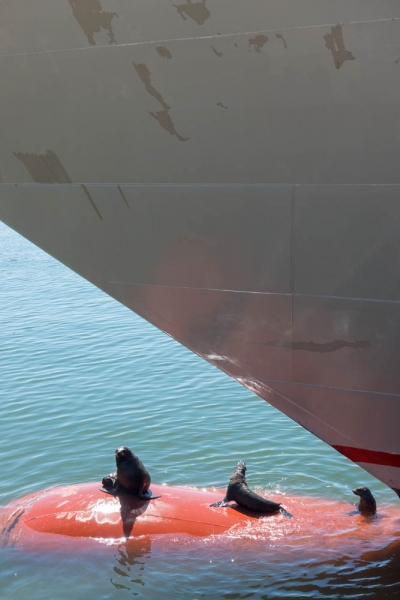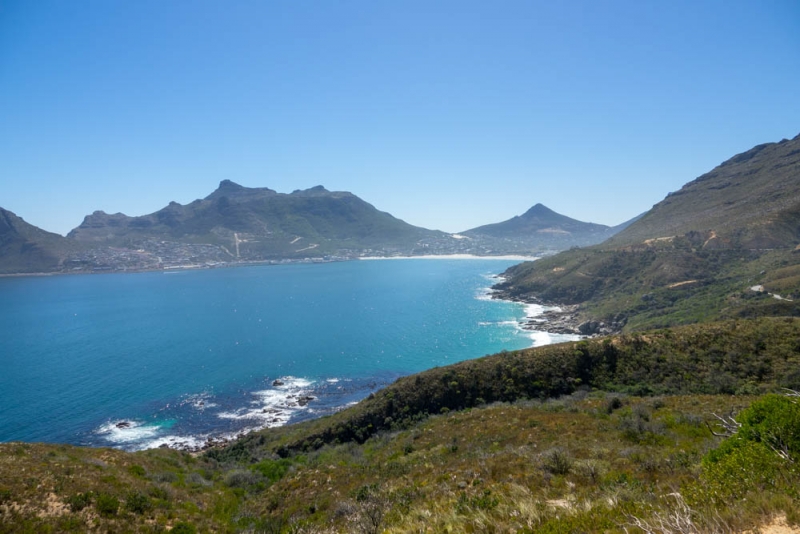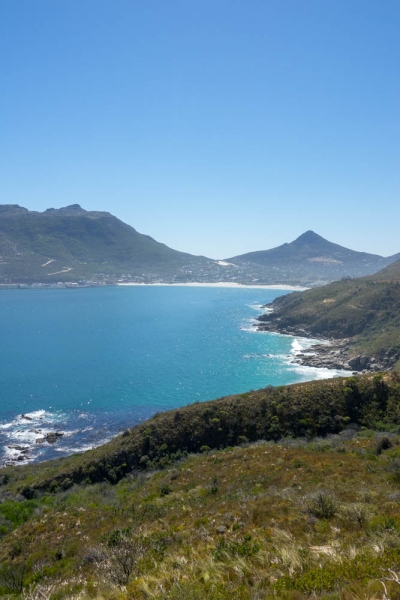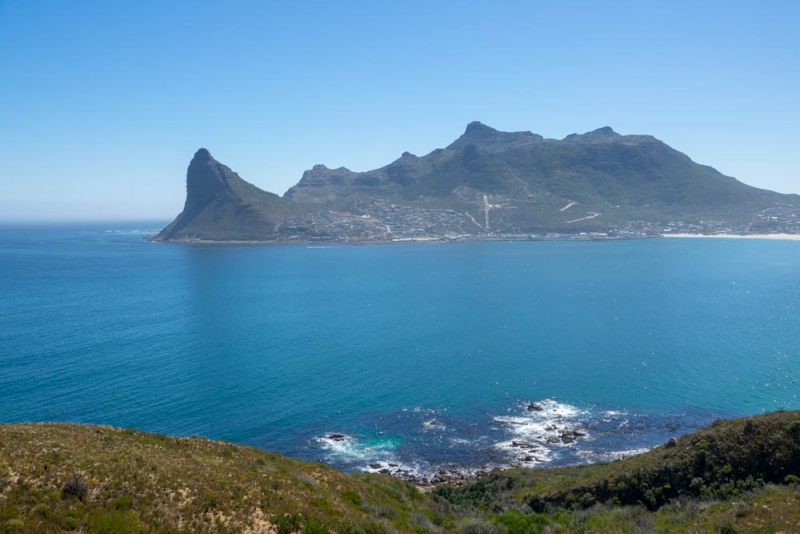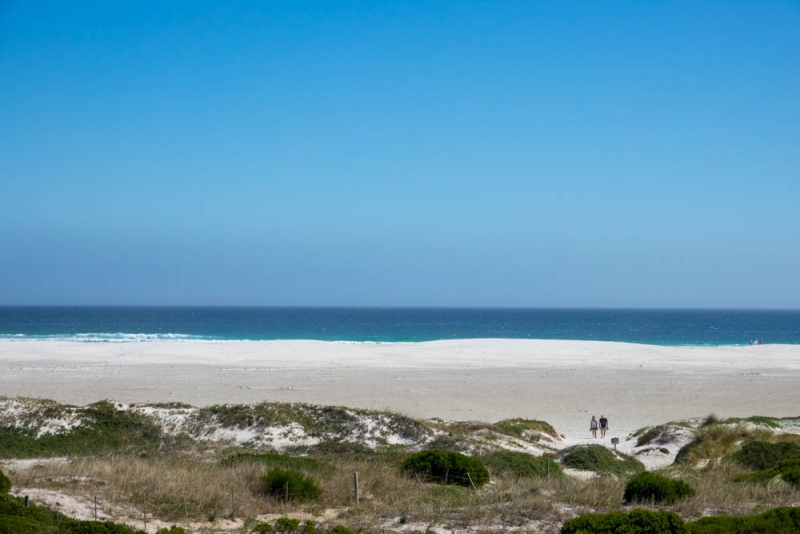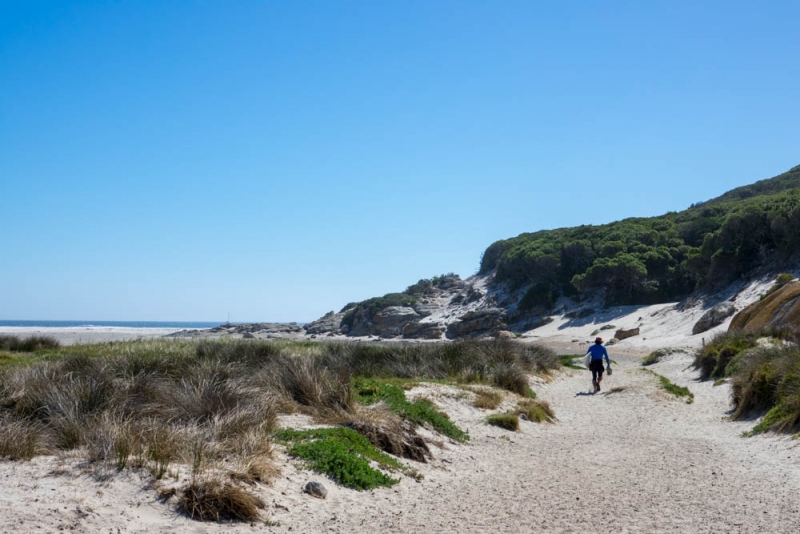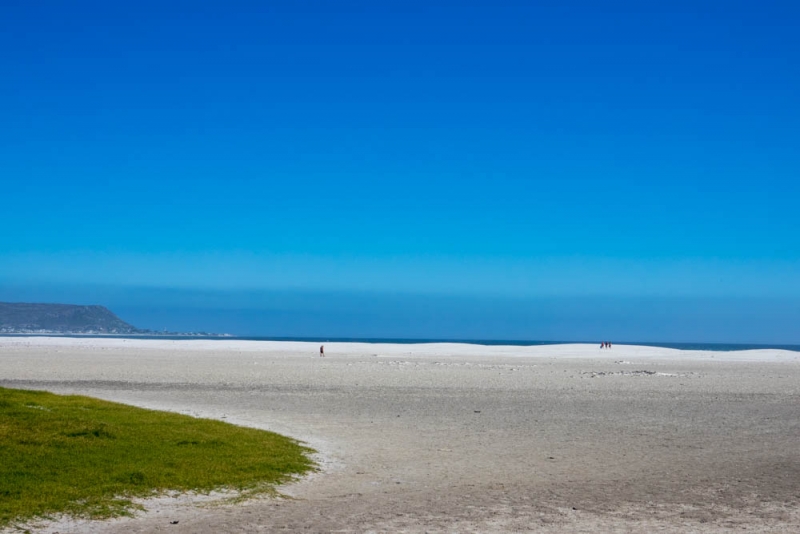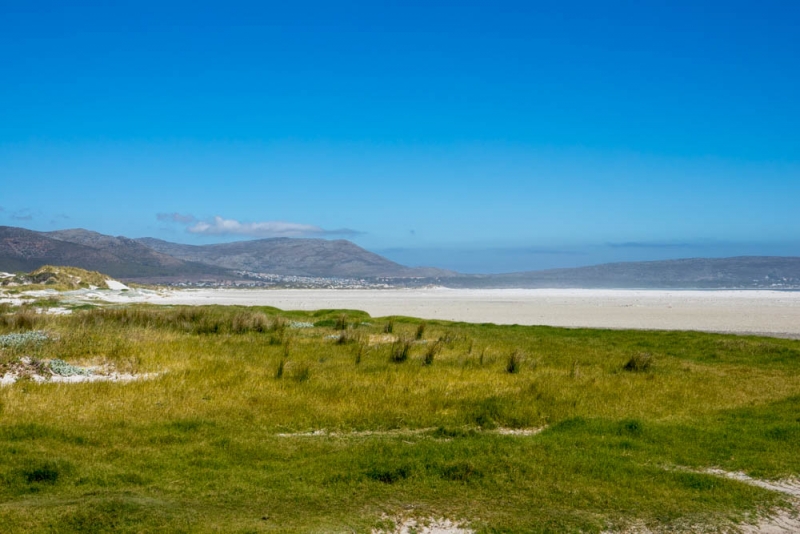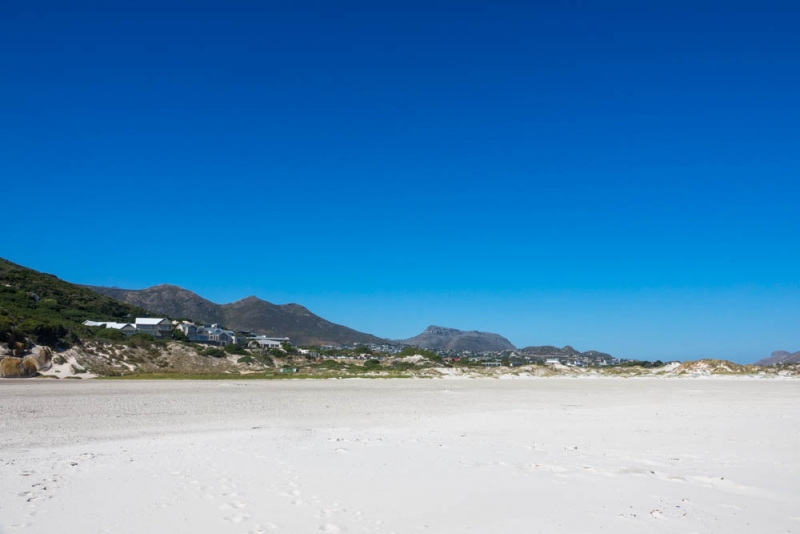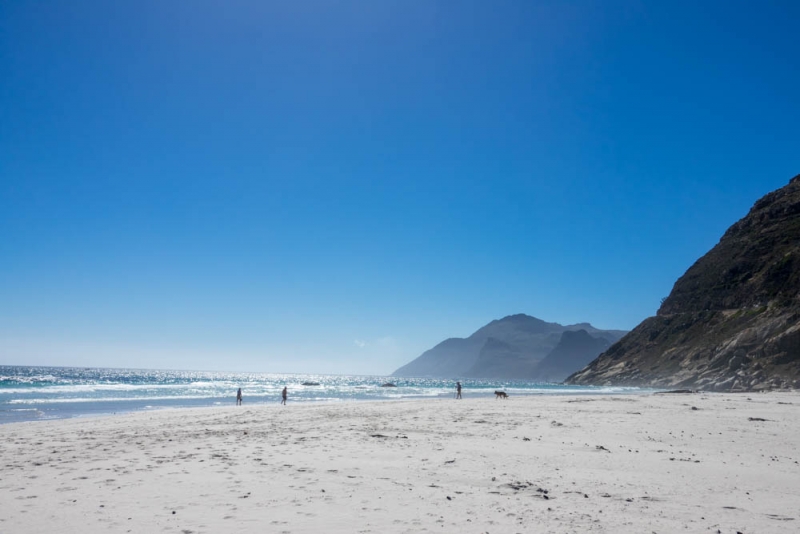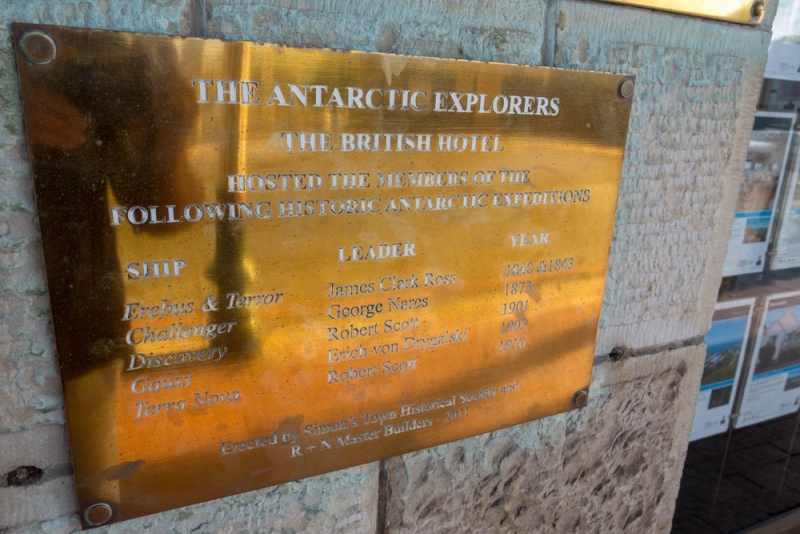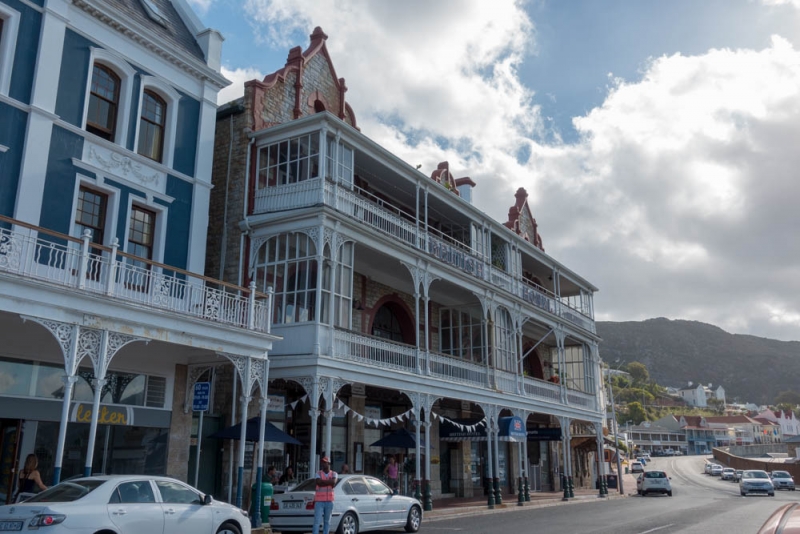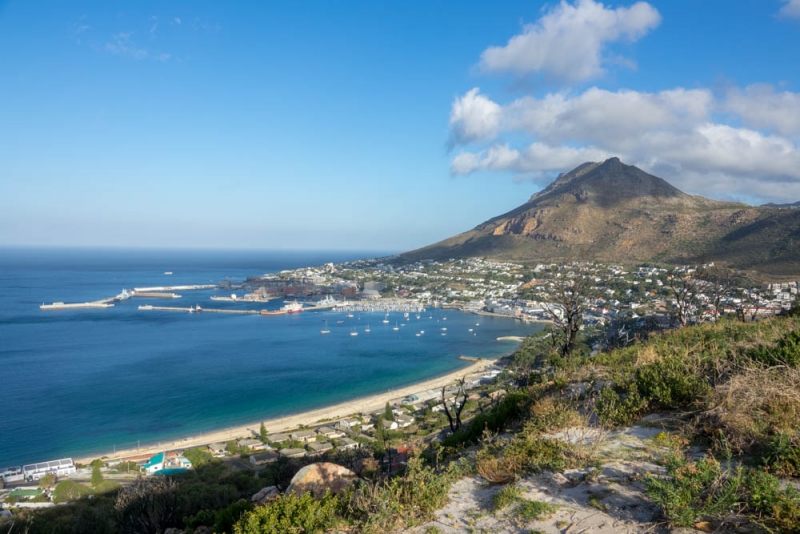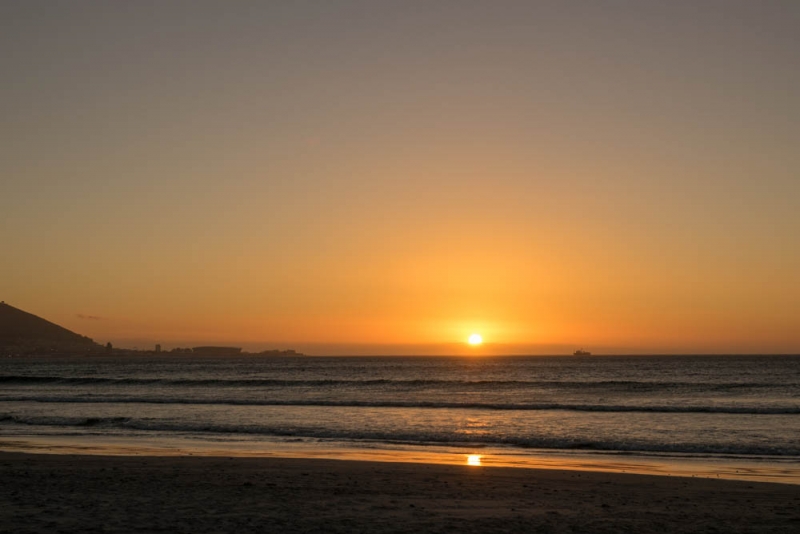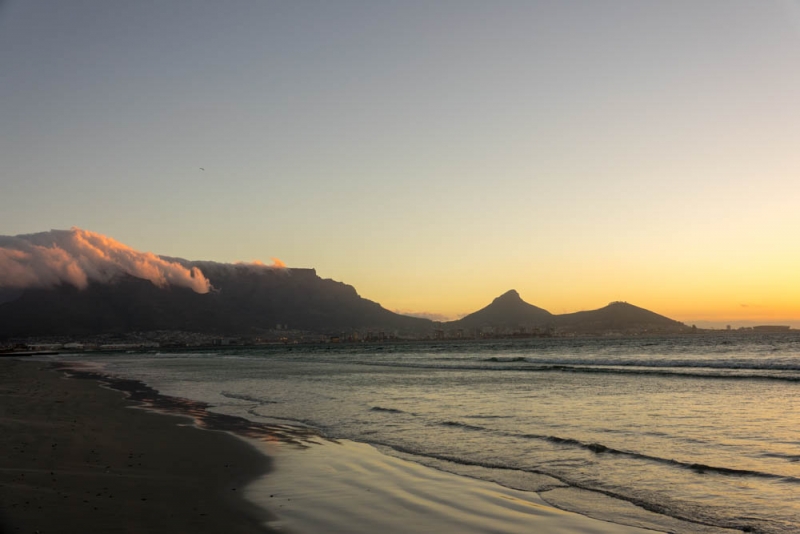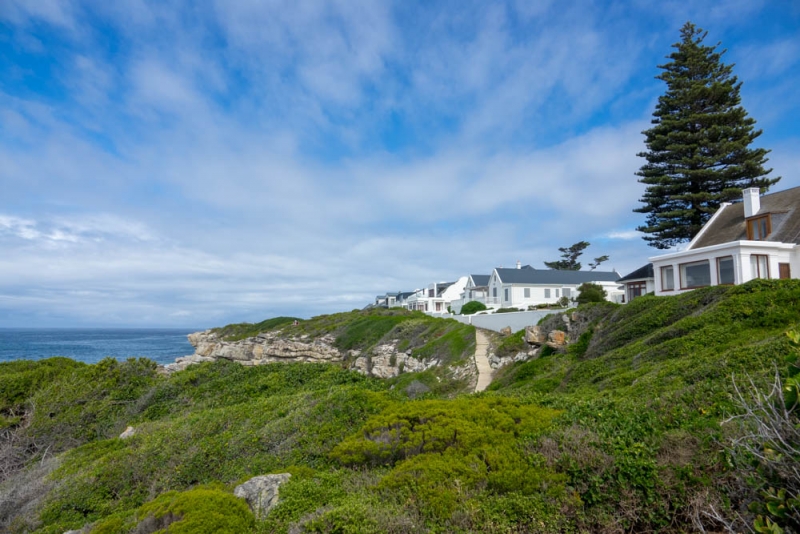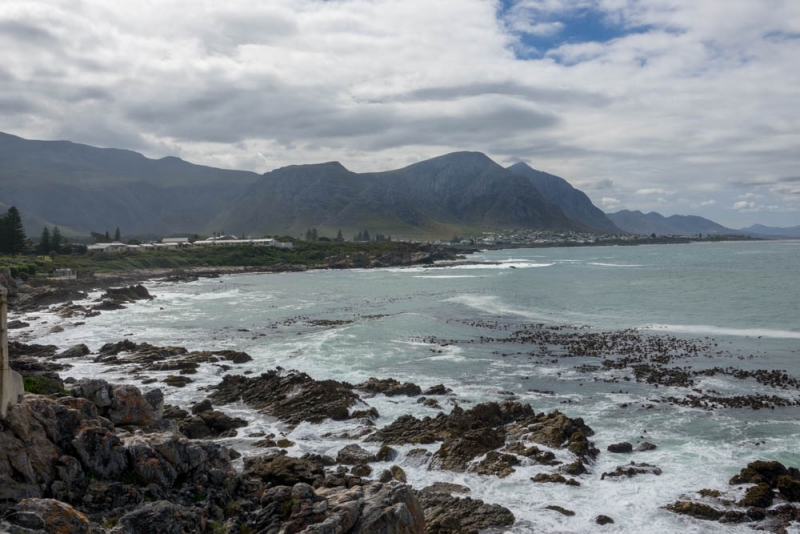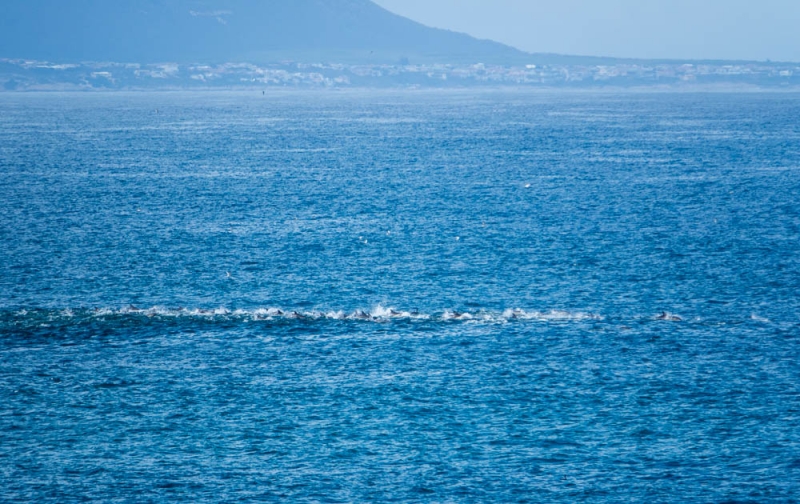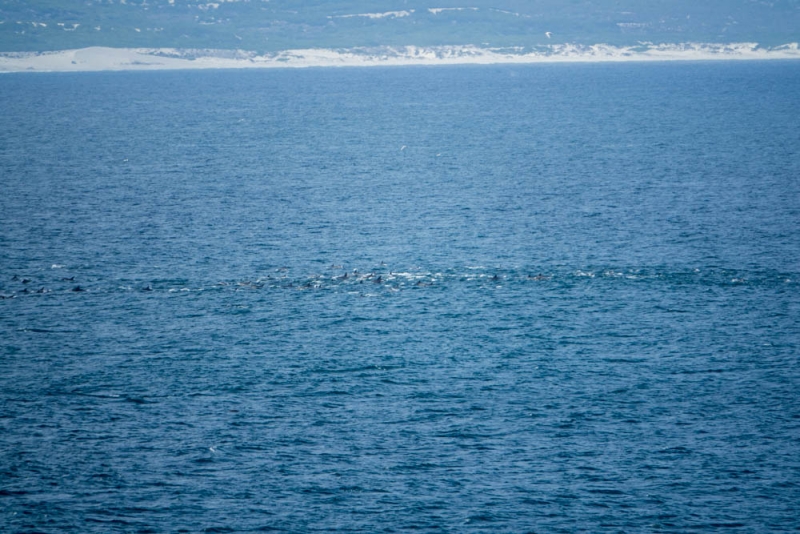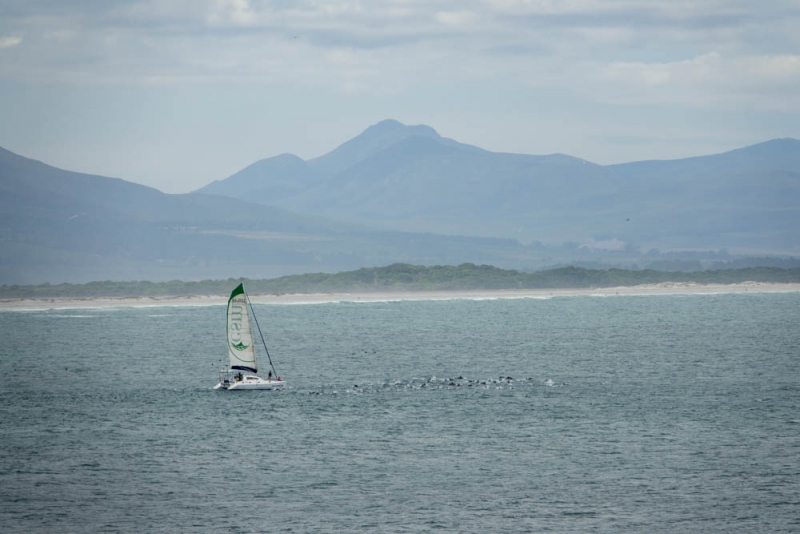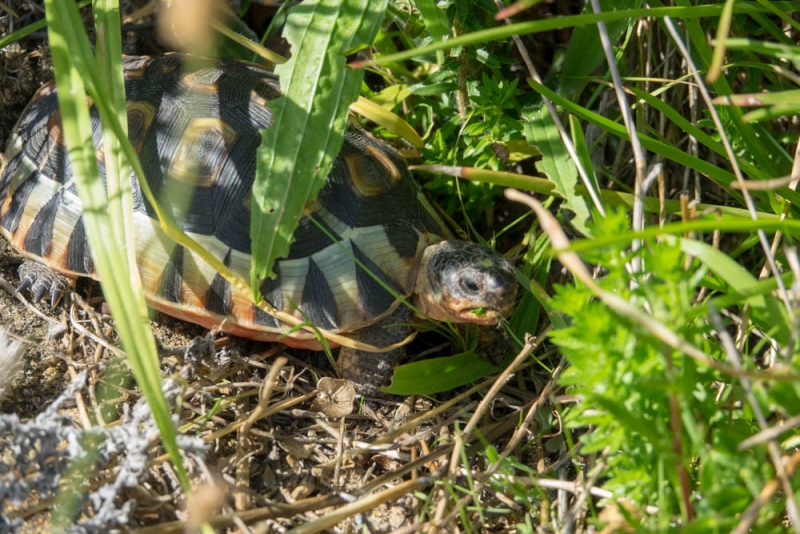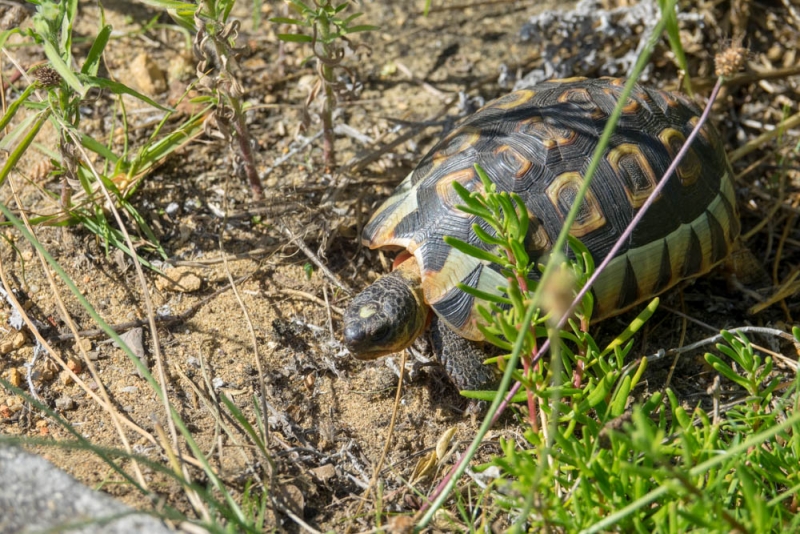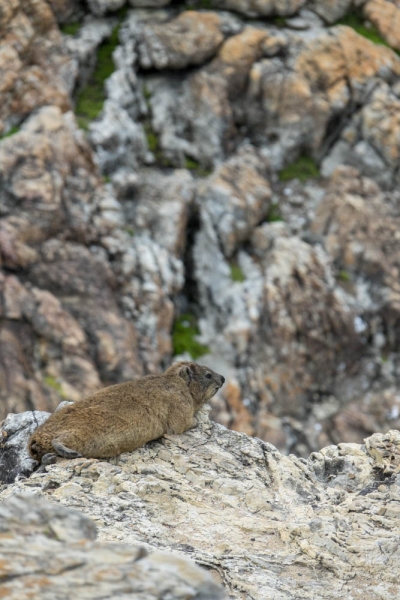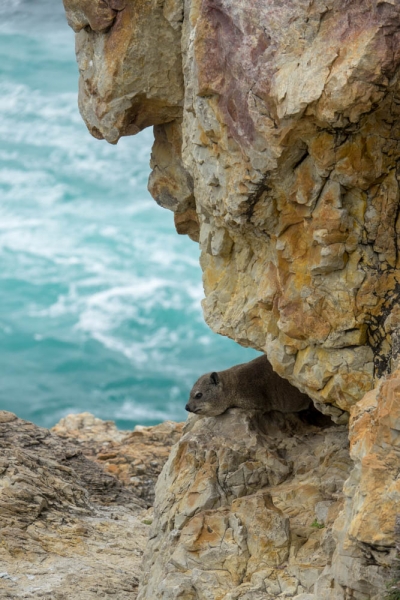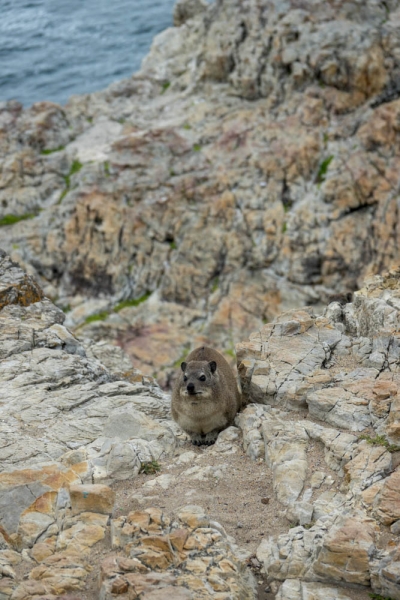Cape Town, Friday March 23, 2018
Commandant Garcia has reduced speed on Le Lyrial overnight on our approach to Cape Town, to time the arrival to the Cape of Good Hope at sunrise. The day is shaping up to be bright and sunny based on the sunrise, but it also makes seeing the Cape difficult in the early morning glare. The waters are shallow in this area and Le Lyrial is keeping a good distance away from the shoreline.
We head towards Cape Town port, and arrive at 10 am outside the harbour entrance. It is a stunning morning to arrive in Cape Town – Table Mountain is clear, as is Lion’s Head and Chapman’s Peak. The Twelve Apostles are also easily seen from the ship. There are plenty of Cape Fur Seals in the water, and a couple of Southern Right Whales with their distinctive V-shaped blows to greet us. Some fast-moving African penguins move quickly out of the way of the ship as we pass by.
There is a 30-minute delay while the mandatory harbour pilot leaves the port and arrives on Le Lyrial. Commandant Garcia announces (he sounds surprised) that we will be piloted by a female into the port. He also announces that he is ‘gifting’ the port manoeuvre to the Staff Captain, who inches Le Lyrial slowly towards the wharf. By the time we get alongside, there is a full complement of officers watching from the wings of the bridge – Commandant Garcia, Staff Captain Tristan Delhommeau, the Safety Officer and the Chief Bosun. It takes a while for the South African officials to clear the ship, and at the end, rather than a 10:30 am arrival, it is closer to 11:45. Disembarking is done by deck, with the cheap seats on Deck 3 being the last. The ship named World Odyssey, which hosts the semester-at-sea organisation, is already docked, and the cooks from that ship seem to be interested in our arrival. No sooner has Le Lyrial docked that a family of Cape Fur Seals take up residence on this shiny if slippery, red rock. The bull seems to be quite adamant that this is his new territory. It must have been a shock later in the day when Le Lyrial moves forward to take the place of the World Odyssey, which departs sometime in the late afternoon. I have a rental car booked for 10:30 am, and it’s 1:00 pm before I’ve hiked up to Loop Street and collected it. It’s a stunning day in Cape Town, clear blue skies and 26 degrees, a perfect day for a drive through the posh suburbs of Bantry Bay, Clifton, Camps Bay and on to Noordhoek.I find myself on the toll road to Chapman’s Peak, which is largely deserted due to the relatively high toll charge of 45 Rand for a car to traverse the pass. As I’m paying the toll at the manned booth, I can see that they have a watch list of vehicles that have been paying the ‘day pass’ rate that only gets you to the top of the peak, and evidently continuing down the road on a regular basis. A few drivers owe upwards of 150 Rand. It’s worth the toll fee for the wonderful views over Hout Bay on the way.
Next stop is Noordhoek, a coastal town I visited in 2012. Noordhoek is a horsey town, that boasts a stunning white sand surf beach. I’ve been here before to this beach and found it quite deserted, but today there are dog walkers, a few optimistic surfers, and horse-riders. Many of the properties on the outskirts of the town are equestrian, and on a Friday afternoon, the quiet roads are used by what seems to exclusively be teenage girls out for an afternoon hack on their horses and ponies. It’s a nice walk on the beach at Noordhoek, but it’s time to push on towards Simon’s Town. Simon’s Town is famous for a few things – cage diving with great white sharks, the naval dockyards, and for the old British Hotel, which hosted James Clark Ross in 1840 and 1843, Robert Scott in 1901 and 1910 and Erich von Drygalski in 1903 on their various voyages to Antarctica and South Georgia Island. Drygalsky Fjord at South Georgia Island is named after Eric von Drygalski. The British Hotel was restored in 1992 and is now private apartments. I drive along the coast from Simon’s Town towards Cape Point but bypass it in favour of a drive over the pass, which on the way down provides a spectacular late afternoon view over Simon’s Town. It’s heading towards sunset, so I’m looking for a good vantage point, but the best light is as I’m driving down the freeway trying to find the R27 exit. I turn off a Lagoon Beach just as the sun is going down. Lagoon Beach has some luxury apartments and a hotel, but the beachfront seems to be popular with young locals braving the now chilly winds blowing down off Table Mountain. The sunset is quick, and the gathering cloud on the horizon prevents any afterglow. The next challenge is to find overnight parking close to the cruise terminal. There used to be overnight parking available at the Clocktower, but this is now gone, and the closest seems to be the Breakwater Parking behind Victoria Wharf. It’s walking distance without luggage but will need a short taxi ride in the morning. Parking is cheap in Cape Town – 12 hours parking will cost ZAR80, or about $AUD8.50.It’s cooled off considerably on the waterfront, so I opt for dinner at Harbour House as I’m now too late for dinner on Le Lyrial. The food is good, but the restaurant is noisy due to a group of inebriated Americans celebrating a birthday, so I don’t linger. Good food is relatively cheap in Cape Town – two courses plus a glass of prosecco and a large bottle of sparkling water is less than $AUD50 including a tip.
The last time I was in Cape Town I parked a rental car under the old silos on the waterfront. The silos have now been transformed into the Silo Hotel, where a suite is over a thousand dollars a night.
It seems to have generated another little area on the waterfront, with new restaurants and a Virgin Active gym, and it is busy when I’m walking past back to the cruise terminal. The crew of Le Lyrial that are off-duty after the dinner service are walking out of the terminal as I’m heading back in, 11 hours after I left.It’s an early 8 am disembarkation tomorrow morning, with bags out before 6 am. I’ve yet to finish packing, so I’d better get on with it.
Hermanus, Saturday, March 24, 2018
There are some early departures from the ship this morning starting at 5 am, but the vast majority of passengers are on independent arrangements and scheduled to leave at 8 am. I seem to be one of the first off at 8:10 am, and have my luggage in a taxi 5 mins later, and I’m at the parking garage 10 minutes after that.
My VW Polo has been a great little car to drive, but the boot space doesn’t extend to a large Samsonite suitcase and a rolling camera bag. The camera bag has to be wedged in between the front passenger seat and the rear passenger seat, and I’m hoping the tinted windows don’t draw attention to it.
Given that I’m off the ship early and don’t have to be at the airport until 3 or 3.30 pm, I decide to head to Hermanus – it’s hard to believe it’s 4 years since I was last there. It’s the offseason so I’m not expecting to see any whales, but a walk along the clifftops will be good. It’s 90 minutes each way, so easily doable with a couple of hours to spend in Hermanus.
It’s an easy drive, the speed limits on the N2 vary from 80 – 120km. Speed limits are regarded as strictly optional, and one driver flies past me doing at least 140km if I’m sitting on the speed limit of 120km.
It’s relatively bright and sunny in Hermanus when I arrive, and I decide that the safest place for my car and luggage to reside is in the paid car park underneath Edgars. All up, a couple of hours parking will cost about $2.50.
There are a few locals walking the path along the clifftop, and to my surprise, I see a couple of soft whale blows relatively close to the shore. They might be juvenile southern right whales, but I’ll need to look for dorsal fins to be sure.
There is also a dark line of water and a breaking wave that seems to be changing direction. As the wave gets closer, I realise that it is a huge pod of dolphins chasing a school of fish. Based on a count of fins that I can see in the photos, there are at least a hundred dolphins in the pod. The ‘wave’ I can see is created by so many porpoising dolphins with some of the more acrobatic members leaping out of the water and splashing back down. The size of the pod is enough to attract a local yacht, which heads out and follows the pod, helpfully showing that the pod is changing direction frequently as they hunt. Whatever they are chasing, they are spending a couple of hours doing it, first heading across the bay, then back again, and finally back out the bay to sea. They never really approach close to the shoreline, but it is an amazing sight. One of the locals thinks there are 800 dolphins in the pod, which seems too many, but I can clearly see that these are long-beaked common dolphins, with males, females and some calves. I follow them along the clifftop path and am momentarily distracted by this young leopard tortoise, grazing on the grass alongside the path. There are also about 4 whales in the bay close to the shoreline. They are not spending a lot of time on the surface, but the ones I see are not Southern Right Whales – this one is a Bryde’s whale or a Minke whale. It’s hard to tell the difference by the dorsal fin, but given it seems to be uniformly dark, I’ll go with a Bryde’s whale.There are also a number of rock dassies, or hyraxes, common in South Africa and Namibia. They resemble a large guinea pig, but based on genetic analysis, are related to elephants and dugongs.
I have to leave at 1 pm to allow time for traffic delays, and the weather is turning to clouds and soft rain as I’m leaving Hermanus. I have lunch on the run and stop at Fick’s Pool, a tidal swimming pool, which isn’t getting much use at this time of year. There seem to be some interesting small boutique hotels across the road, which look relatively new. It would be a good place to stay but needs a car, as does the whole area really.It is raining gently on and off on the drive back, but a little rain on the road doesn’t explain the Mercedes E-class sedan that has crossed onto the wrong side of the road and ended up perched on the safety railing, which is all that is stopping it tumbling down into the ravine below. It has only just happened as I pass by, and it must be speed-related – fortunately the driver and passenger are unhurt and haven’t hit anyone else, and there are no skid marks so they haven’t swerved to avoid anything. A police car is heading to the scene when I pass it a few kilometres further down the road.
The rest of the drive to Cape Town International Airport is uneventful, and my British Airways flight to Johannesburg is on time for departure and arrives in Johannesburg ahead of schedule.
My flight to Sydney is 24 hours away, so it’s an overnight at my favourite airport hotel, the Intercontinental O.R. Tambo. A 2-minute walk from arrivals, the rooms are mostly silent. Other than the occasional rumble of an aircraft, there is more noise from slamming doors from other guests than from arriving and departing aircraft.

